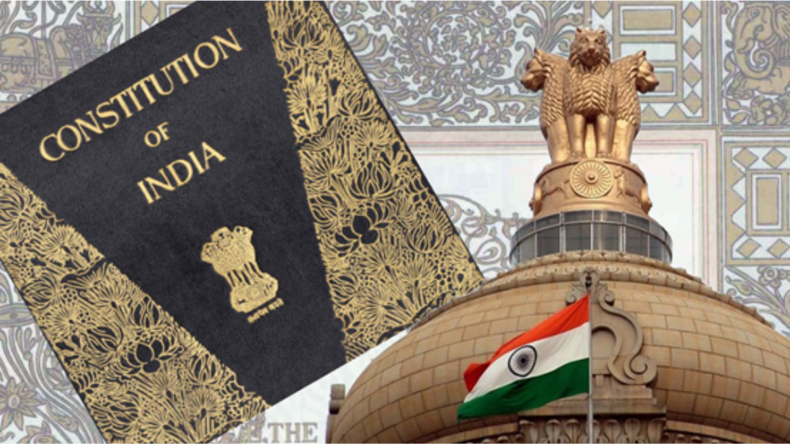The Indian Constitution creates a parliamentary form of government with a federal structure with some unitary characteristics. Declare India a sovereign, socialist, secular and democratic Republic. The objectives stated in the Preamble are to guarantee justice, freedom, and equality for all citizens and promote brotherhood in maintaining the unity and integrity of the nation.
Government of India
Government of India, often shortened to GoI, and also referred to as Central Government or Union Government or simply Central, is the Government of India created by the Constitution of India as the legislative, executive and judicial authority to govern the Union of twenty-eight states and eight territories of the Union.
The seat of government is located in New Delhi, the capital city of India.
The government executive is the person who has exclusive authority and responsibility for the day-to-day administration of the state bureaucracy.
The division of power into separate branches of government is at the core of the republican ideal of a separation of powers.
Executive power is primarily in the hands of the President of India, by Article 53 (1) of the Constitution. The President has all constitutional powers and exercises them directly or through subordinate officials, as referred to in article 53 (1).
The President shall act per by assistance and advice offered by the President of the Council of Ministers, who presides over the Council of Ministers as referred to in Article 74 of the Constitution.
Constitution of India
One hundred four amendments have been made to the Constitution of India as of January 25, 2020.
The first amendment to the Constitution of India was created in 1950. At present, the Indian Constitution has 448 articles in 25 parts and 12 Schedules.
India, commonly known as Bharat, is a union of states, and it is a Secular Democratic Sovereign Socialist Republic with a parliamentary system of government.
The Republic is governed under the Constitution of India, adopted by the Constituent Assembly on November 26, 1949, and entered into force on January 26 1950.
Indian Constitution creates a parliamentary form of government with a federal structure with some unitary features. The constitutional head of the Union Executive is the President.
Under Article 79 of the Indian Constitution, the United Parliamentary Council consists of the President and two Chambers knew as the State Council (Rajya Sabha) and the People’s Council (Lok Sabha).
Article 74 (1) of the Constitution stipulates a Council of Ministers, chaired by the President of the Council of Ministers, to assist and advise the President, who performs its functions according to opinion.
Therefore, the actual executive power is entrusted to the Council of Ministers headed by the President of the Council.
Indian Constitution declares to be a secular, sovereign, socialist and democratic Republic that guarantees its citizens’ justice, equality and freedom and seeks to promote brotherhood.
The original 1950 constitution is housed in a helium-filled box at the Parliament Buildings in New Delhi.
The words ‘secular’ and ‘socialist’ were added to the Preamble by the 42nd Amendment Act in 1976 during a state of emergency.
Article 368
Article 368 of the Indian Constitution is the Power of Parliament to amend the Constitution and procedures.
Notwithstanding the provisions of this Constitution, Parliament, in exercising its constituent powers, may amend any provision of this Constitution by addition, variation or cancellation under the procedures set out in this article.
A modification of this Constitution can be initiated most effectively using the advent of a Bill for a reason in both House of Parliament.
While the Bill is surpassed in every House with the assistance of using a majority of the entire club of that House gift and voting, it will be offered to the President who shall supply his consent to the Bill, and thereupon the Constitution shall stand amended according to with the phrases of the Bill.
The provisions over this article and the amendment must also be ratified by the Legislature of not less than half of the States by a resolution adopted by that Law before the Bill governing the revision is submitted to the President for approval. And nothing in Article 13 shall apply to any amendment made under this article.
No amendment to this Constitution made or deemed to have been made under this article, before or after the commencement of Section 55 of the 1976 Constitutional Act, may be questioned in any court for any reason.












